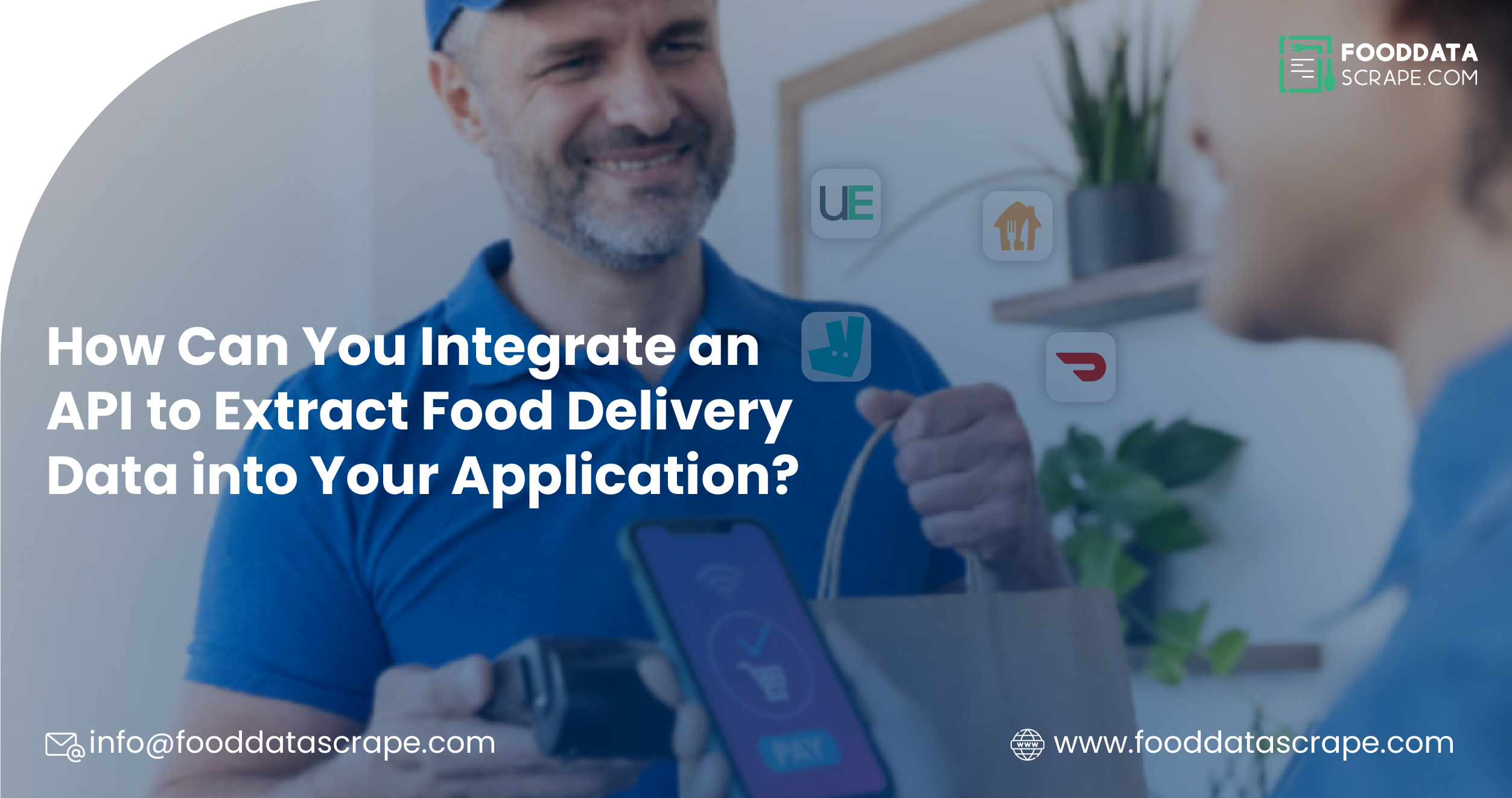APIs, or Application Programming Interfaces, have changed the face of the digital world, making it seamlessly smooth to interexchange data between applications, platforms, and services. With the help of an API to extract food delivery data, one can access meaningful datasets relating to food delivery from several platforms. Organizations and data analysts or developers increasingly require real-time information with precision and details, and organizations and data analysts or developers seek more profound insights into food ordering patterns, restaurant performance, customer preferences, and other critical metrics. The article details the complexities surrounding scraping food delivery data via API, including potential uses and challenges, while clearly illustrating how this type of API solution for scraping food delivery data can transform how business is conducted concerning data in the food delivery industry. APIs enable companies to streamline business-related activities better and improve decision-making, significantly making a difference in delivering satisfactory customer services in an ever-changing market.
The Role of APIs in Food Delivery Data Extraction
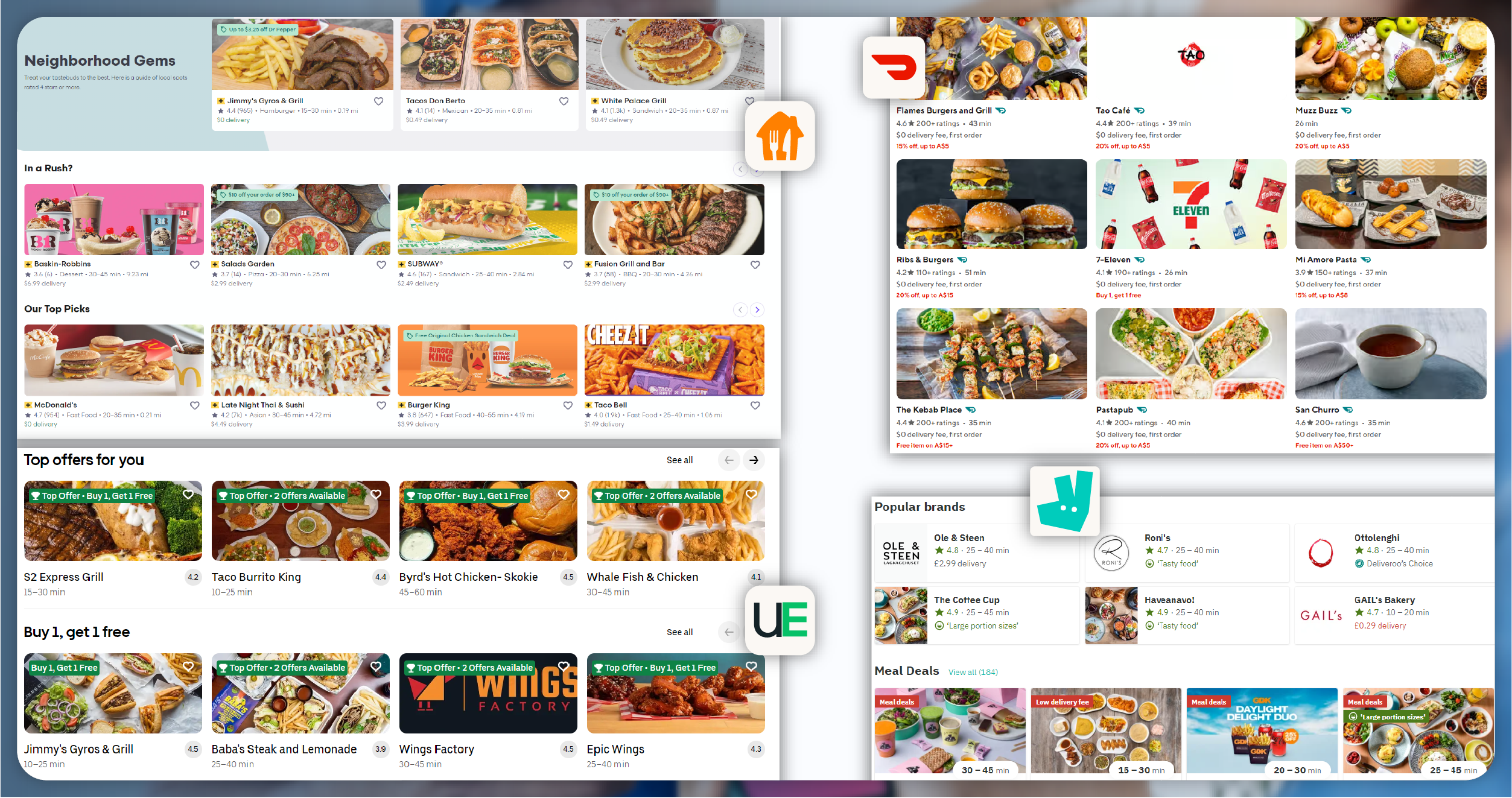
The food delivery industry has been booming, fueled by convenience and demand for on-demand services. By using apps such as Uber Eats, Grubhub, DoorDash, and Deliveroo, the entire consumption pattern of most customers has changed, and they now interact with restaurants and food service providers in an entirely different manner. Such platforms generate massive amounts of daily data on customer preferences and order patterns, times of delivery, and reviews. Businesses and analysts will have to contact the data if interested in extracting this information for market research, competitive analysis, or other forms of operational optimization.
Api-based food delivery data extraction allows third-party applications or tools to tap into vast volumes of real-time data without having direct access to source platforms. They afford clear protocols for exchanging data in a structured fashion and thus are crucial when handling large datasets in scalable and efficient ways. Through acquiring APIs, the business can extract food delivery data using API to enhance its operations strategies.
Through APIs, there is extraction of various types of data about food delivery, such as:
- Restaurant Data: Information about local restaurants, menus and pricing, operational hours, and locations.
- Order Data: Order item, quantity ordered, delivery address, and timeline.
- Customer Feedback: Consumers' ratings, reviews, and comments on dining and delivery experiences.
- Promotions and Discounts: Promo offers, discounts, and deals in restaurants or the delivery platform.
- Delivery Insights: Time taken to deliver, distance traveled, peak ordering time, and driver performance metrics.
Critical Use Cases for Food Delivery Data Extraction via API
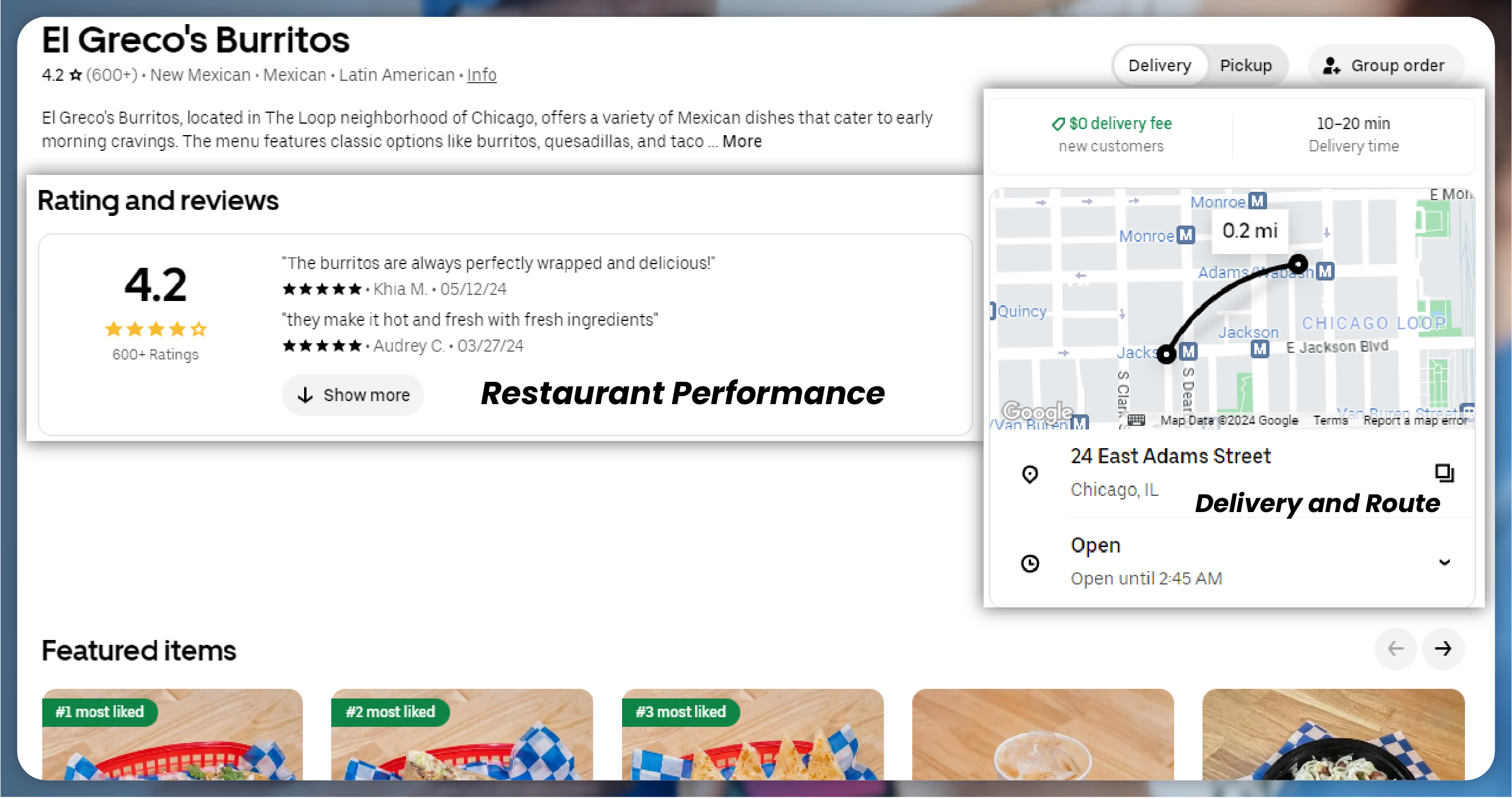
APIs that can gather data on food delivery are countless and have various applications in numerous industries. Some of the most prominent use cases are mentioned below.
1.Market Research and Consumer Behavior Analysis
The data related to food delivery can help businesses penetrate their consumer preference and trends along with consumer behavior. Restaurants and food brands can make the most of this data to understand what people prefer, which cuisines are in demand, and the most favored dishes according to region. The tracking of food trends, paired with the predictive ability of future consumer preferences, can be pursued by analyzing which meals are in demand and when their demand is at its peak. This helps the companies optimize their menus, marketing strategies, and customer engagement. The food delivery data collection through API enhances this analysis by offering comprehensive datasets.
2. Restaurant Performance Analysis
Food delivery websites offer outstanding information concerning individual restaurants' performance. Through APIs, businesses can monitor restaurant metrics such as order volume, average delivery time, and customer satisfaction ratings. Restaurants can compare these metrics with those of their competitors and see areas for improvement, such as refining their menus, making the delivery process more efficient, or improving service quality. An API to extract food delivery information is the most efficient means of streamlining this process.
3. Customized Marketing and Service Retention
With the APIs providing in-depth customer information, businesses can create customized campaigns targeted at individual choices. Using data on previous orders, favorite restaurants, or most-ordered meal items, promotions, loyalty programs, or push notifications can be sent to customers. Personalized marketing not only helps improve retention rates but also increases repeat business. The food delivery data scraping API makes this critical gathering easier.
4. Supply Chain Optimization
Businesses may improve their logistic planning and inventory management by extracting food delivery data and food and beverage supply chains. For example, it will allow suppliers to follow the ordering pattern of specific ingredients or dishes. This means businesses can differentiate between the demand for specific ingredients or dishes, making better planning ahead and ensuring a timely supply of what has been ordered. Demand data through APIs can inform restaurants of running out of popular ingredients and thus prevent it. Optimizing this requires an API to collect food delivery information.
5. Price Tracking and Competitive Monitoring
The restaurant's price, discount, and delivery fee can be scraped for real-time data. This allows any business to monitor competitors' pricing strategies in real-time. Restaurants can learn from the scraped data how to set prices high without chasing away customers or design a proper promotional campaign. An API for real-time food delivery data scraping can make trend analysis fast and efficient.
6. Delivery and Route Optimization
Indeed, delivery data, which encompasses driver performance, traffic conditions, and delivery times, would allow actual logistics and route planning improvements. This access to historical data allows delivery services to optimize delivery routes, reduce delays, and increase customer satisfaction by identifying patterns in historical data. This data can also be utilized to suggest peak ordering times and adjust staffing levels to ensure timely delivery. Businesses can scrape restaurant delivery data via API for insight into these crucial metrics.
7. Third-Party Integrations to Have a Rich User Experience
APIs can allow third-party applications to be included in food delivery services, enriching the user experience. For instance, financial institutions or payment services may link their systems to delivery apps for smooth payment solutions. Similarly, direct access to food delivery data through an API may enable fitness apps to recommend better meal choices or track users' calorie intake. API for extracting food delivery data opens excellent possibilities for delivering better services and higher user engagement.
Challenges in Extracting Food Delivery Data via API
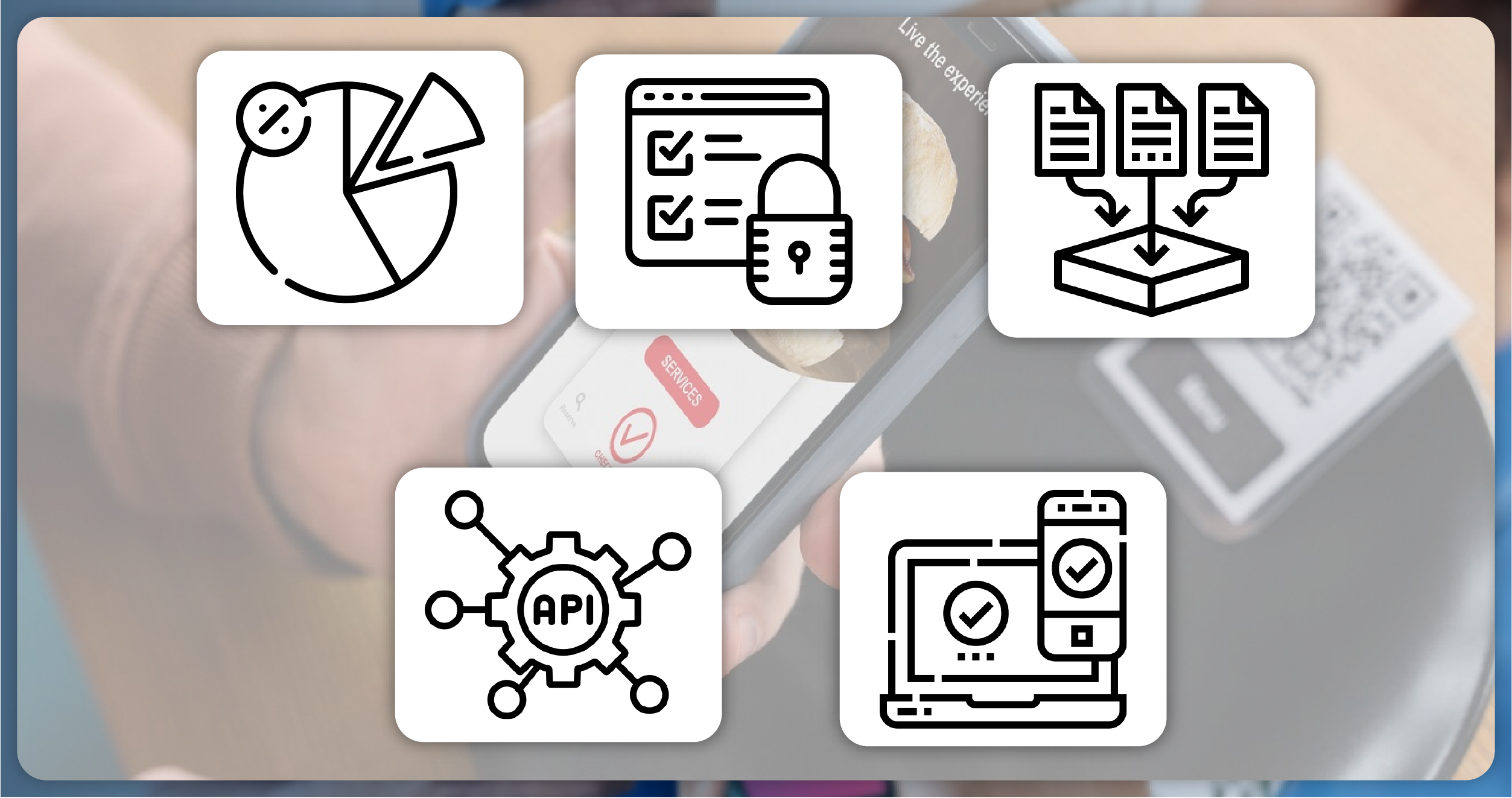
APIs provide numerous advantages to garner information about food delivery, but there are also some hurdles that businesses and developers have to face. The following shows some of the significant challenges facing businesses and developers in using APIs for this purpose:
1. API Rate Limits and Quotas
Most food delivery interfaces limit the number of API calls or render a quota to prevent their servers from overflowing with data queries. Businesses that want to extract food delivery data with API or engage in frequent API calls find such restrictions limiting. Developers must apply efficient data extraction techniques, considering only the important data while working within the API limits.
2. Data Privacy and Security
Extracting sensitive customer details such as personal data, delivery addresses, and payment details is very sensitive regarding privacy and security. Therefore, developers must abide by data protection regulations such as those outlined by the GDPR (General Data Protection Regulation) or CCPA (California Consumer Privacy Act) for handling personal data. Additionally, encryption and authentication must be strong enough that the extracted data, especially from using an API for food delivery analytics, is tamper-proof and secure from breaches.
3. Data Uniformity and Normalization
Different food delivery platforms may represent APIs with data in different formats or structures, which creates difficulties in normalizing data for analysis purposes. Developers should, hence, process the data received from various platforms for cleaning, normalization, and proper formatting to enable practical analysis. This is done using custom scripts, data pipelines, or transformations to ensure consistency. API-based food delivery data extraction can make this easier.
4. API Changes and Versioning
Providers keep frequent changes in APIs by changing their endpoints, data structures, or authentication methods. The updated versions of such APIs may not accommodate running data extraction processes set using the previous versions. Managing such frequent updates and changes is a constant job for developers who use API to collect food delivery information.
5. Expense and Access Restrictions of APIs
While some APIs are free and open to public usage, most food delivery companies charge a fee to gain access to the API, and the cost depends upon the number of requests or the amount of particular data. These costs can mount up rapidly for businesses using food delivery data scraping services to collect large volumes of data. Additionally, API restrictions may also be available only to partners. In contrast, others would only allow access to particular categories of data, a limitation that could disadvantage any small business wishing to use the extracted data.
Legal and Ethical Issues

The legal and ethical consideration of extracting food delivery data is scraping data without explicit permission from the platform. Data scraping on a site is considered an offense if the terms do not specify permission for scraping or are protected by intellectual property laws. Similarly, doing something that upsets the terms of service will result in legal action against the business. Businesses, therefore, have to make sure they acquire substantial permissions and have the right to extract food delivery data with API. They must also ensure the data is responsibly applied in the food delivery business.
Best Practices for Extracting Food Delivery Data via API
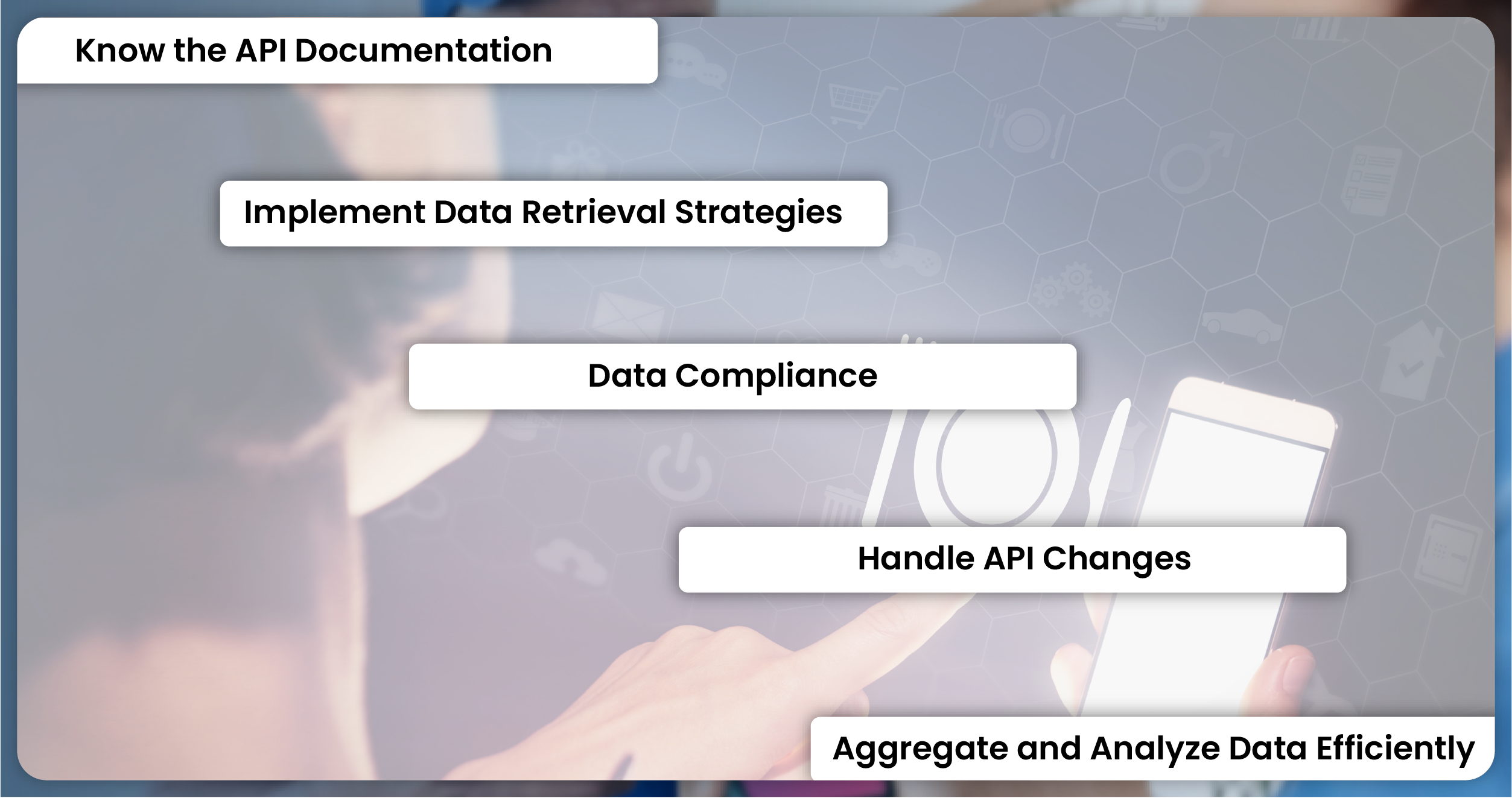
API usage for extracting food delivery data is best optimized by following best practices. Best practices improve the accuracy of the data, increase efficiency, and keep relevant regulations in check:
1. Know the API Documentation
Review the API documentation before extracting data from any food delivery platform. Knowing what endpoints are available, what type of structures, what rate limits, and what types of authentication methods are available provides necessary information for efficient and safe data extraction. Properly documenting the interaction process with the API helps avoid common mistakes and ensure smooth integration, especially in the case of an API to extract food delivery data.
2. Implement Data Retrieval Strategies
Implement data retrieval strategies that minimize the number of API calls and maximize the accuracy of the data retrieved. Techniques like cache, pagination, and filtering can optimize API usage and keep API calls under the limit specified. Developers will also implement monitoring systems that track API usage in real-time, detect errors, and ensure restaurant menu data scraping is running smoothly.
3. Data Compliance
Collect personally identifiable and sensitive information after complying with applicable data protection laws. Secure the sensitive information with adequate and robust security measures, such as encryption. Obtain explicit consent from users whose information is to be collected and communicate clearly how the information will be used, especially when it involves using food delivery intelligence services.
4. Handle API Changes
Install monitoring systems that monitor API changes and updates. Update the new API version or change the data structure beforehand so that no process is disrupted when extracting data. Regular updates and maintenance on integrating APIs will ensure the reliability and integrity of data being extracted to support efficient restaurant data intelligence services.
5. Aggregate and Analyze Data Efficiently
Advanced data analytics tools aggregate and analyze the extracted data. Data visualization platforms include tools such as Power BI, Tableau, or Google Data Studio, which transform raw data into actionable insights that help businesses make data-driven decisions. Clean and standardize the extracted data before analysis to enhance accuracy in finding those answers, particularly when developing a food price dashboard.
Conclusion
APIs to extract food delivery data provide a vital facility for accessing and exploiting vast data by food delivery platforms. Businesses can obtain massive insights from market research, competitive analysis, delivery optimization, and personalized marketing since they have a relationship with the industry. However, it should be noted that APIs pose challenges in rate limits, data privacy concerns, and their compliance with relevant legal requirements, from data validation and filtering to sanitizing the stream received.
If you are seeking for a reliable data scraping services, Food Data Scrape is at your service. We hold prominence in Food Data Aggregator and mobile restaurant application scraping with impeccable data analysis for strategic decision-making.






















































































